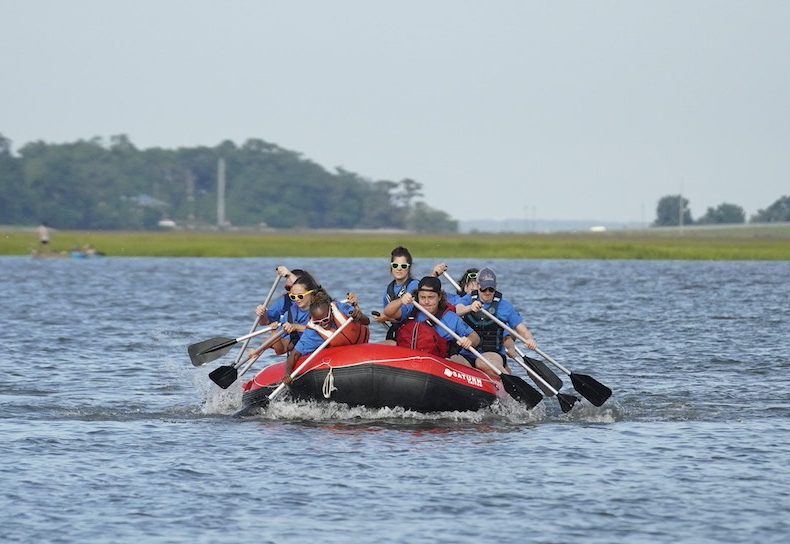Staff reports
Officials with the Clemson University Department of Plant Industry (DPI) destroyed multiple secondary nests of yellow-legged hornet (Vespa velutina) in Beaufort County near Hilton Head Island.
They are the first secondary nests of the yellow-legged hornet found in the state. The nests were found in trees.
The search and destroy mission — which included a trapping system and onsite monitoring by department personnel — came after a beekeeper in Beaufort County videoed the hornets attacking his honeybees in what is called “hawking behavior,” then alerted DPI.
“We found an embryo nest in April, but these are the first secondary nests we have found in South Carolina. We urge folks in the Lowcountry, especially the Bluffton and Hilton Head Island areas, to stay vigilant and report any suspicious nests or hornets to us immediately. That is our best shot at controlling this potentially devastating pest,” Clemson DPI Assistant Director Steven Long said in a news release.
Clemson inspectors are asking homeowners to allow them access to their property as they continue their search for other nests in Beaufort and Jasper Counties. The inspectors can be identified by badges, or Clemson DPI branded shirts and safety vests.
“If one of our inspectors knocks on your door, or you see them walking your property or neighborhoods, please remember that they are doing their jobs to protect the state from these hornets and the damage they can do to our beekeeping industry. This will be an ongoing effort,” said Brad Cavin, who coordinates the Clemson University program responsible for fighting the invasive hornets.
Anyone who finds a suspected nest should report their findings to https://bit.ly/3E3voHv, and include photos. The nest should be left undisturbed so that it can be properly disposed of by field inspectors.
The destruction of the secondary nests is another step in a fight against the hornet that included the Georgia Department of Agriculture, U.S. Department of Agriculture, Savannah National Wildlife Refuge and Hilton Head Exterminators.
The first known detection of the hornet in South Carolina was Nov. 9, 2023, and came after DPI’s Apiary Inspection Program collaborated with the Clemson Cooperative Extension Apiculture and Pollinator Program to create a proactive trapping protocol designed as an early warning system to help keep tabs on the invasive insect. A yellow-legged hornet queen was then trapped March 14.
The hornet builds egg-shaped paper nests above ground and often in trees. Mature nests can be large and house an average of 6,000 workers.
Yellow-legged hornets are distinct from many other nest-building insects in that they build multiple nests throughout the year as they grow in number. The queen begins with a small embryo nest for her and a few workers. As they outgrow this nest, the queen moves to another area sheltered from weather where the workers build a “primary nest,” which can grow to around the size of a basketball. Midyear, she will relocate again to a “secondary nest” — her final nest of the year aiming to maximize reproduction numbers.
In the Southeast, secondary nests are generally found August to November in high, open areas and can be as large as a car engine.
While the yellow-legged hornet — not to be confused with the northern giant hornet — is no more harmful to humans than other hornets, it can have a devastating impact on both managed and wild bees.







